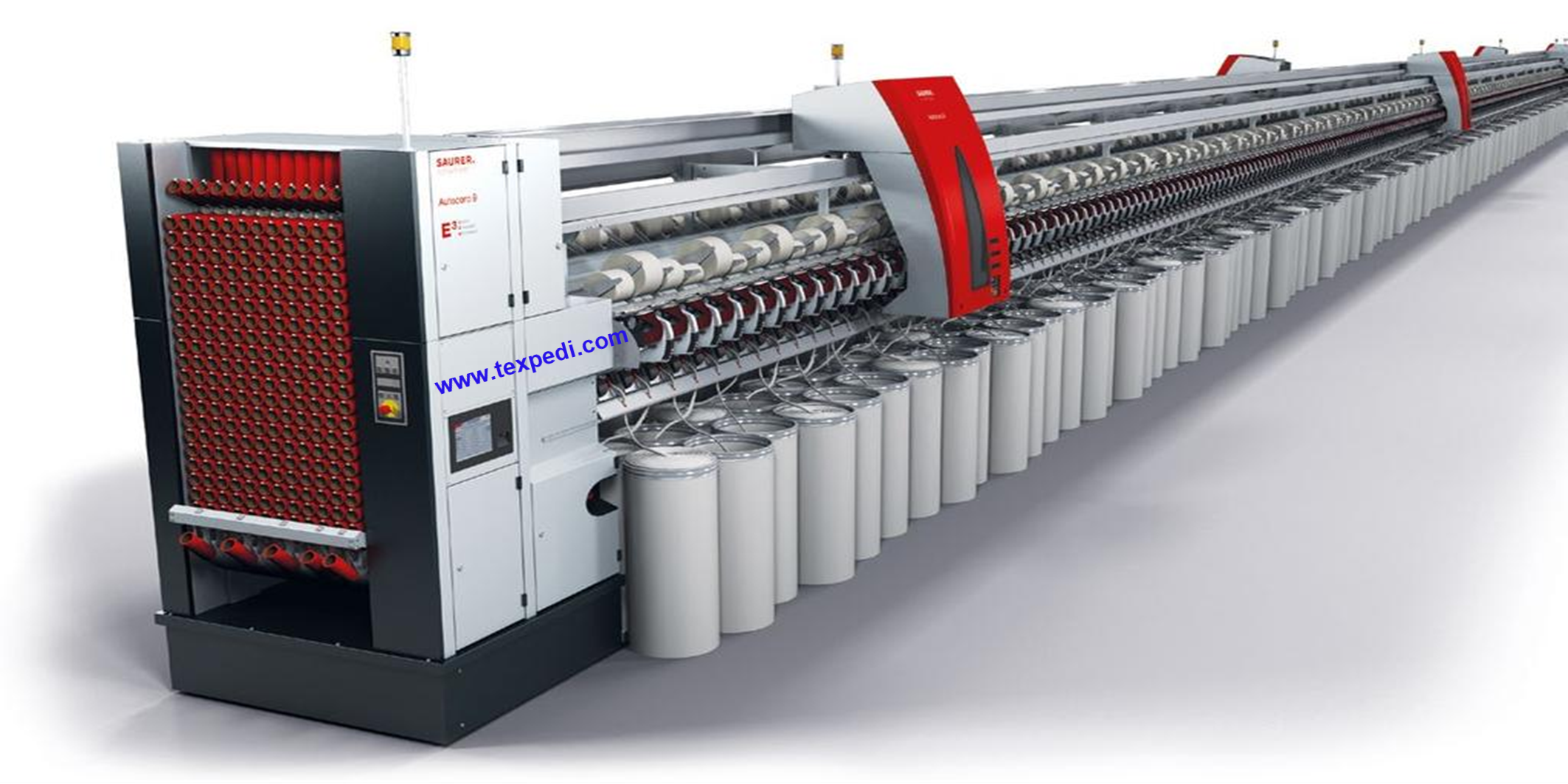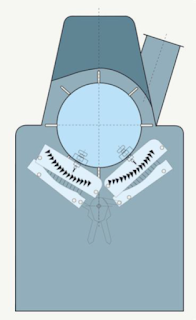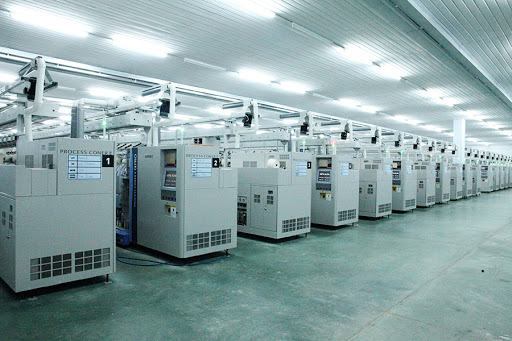Blow Room line?
Blow room: Cotton fibre is compressed in a bale of 200 to 250 kg. This highly compressed cotton fibre need to be opened at first as a part of yarn manufacturing. And there is 1.5% to 7% trash in a cotton bale which is also needed to be removed before further processing. This process of opening & cleaning is known as blow room process. Blow room consists of a number of m/c used in succession to open & clean the cotton fibre to the required degree. 40% to 70% of the total trash is removed in this section.
Operating zones in the blow room
1. Zone-1:Opening machines. 👉Example- Conventional bale opener, Uniflock of Rieter, Blendomat of trutzschler 2. Zone-2: Coarse cleaning machines. 👉Example- Step cleaner, Uniclean or Monocylinder Cleaner of Rieter, Axiflo Cleaner or Dual roller cleaner etc. 3. Zone-3: Blending machines. 👉Example- Conventional vertical opener, Unimix of Rieter, Integrated Mixer of trutzschler etc. 4. Zone-4: Fine cleaning machines. 👉Example: RN Cleaner of Trutzschler, ERM cleaner of Rieter. 5. Zone-5: Intensive cleaning or opening machines. 👉Example- Uniflex of Rieter, Flexiclean of Lakshmi, conventional Scutcher etc. 6. Zone-6: Card feeding. 👉Example- Conventional lap feed, modern Flock feed.
Opening Devices used in Blow Room?
In the textile industry's blow room, opening devices play a pivotal role in the initial stages of processing raw cotton or other fibers. These devices are designed to efficiently and effectively open compressed bales of fibers, separating them into individual tufts or small clusters. The primary objective is to create a uniform and consistent feed of fibers for subsequent processing stages. Various opening devices are employed, including hopper feeders, bale pluckers, and mixing bales, each with its unique mechanism and purpose. These machines help to maximize the quality of the final textile product by ensuring that the fibers are evenly distributed, reducing the presence of impurities, and enhancing the overall efficiency of the textile manufacturing process. Properly operated opening devices are essential for achieving high-quality yarn and fabric production in the textile industry. The action of opposite spikes is opening the cotton fibre. By this action, the large pieces of cotton have been reduced in size.
Classification of the opening devices?
Opening units can be classified as:
Endless path
Gripping devices
Rotating assemblies
Depending on their design, construction, adjustment, etc., these assemblies exert enormous influence on the whole process.
1. Endless path device:
Spiked lattices are known as endless path device. It serves as forwarding and opening devices in bale openers and hopper feeders. They consist of circulating, endless lattices or belts with transverse bars at short intervals. The bars are of wood or aluminium; steel spikes are set into the bars at an angle and at greater or lesser spacing. The intensity of the opening action is dependent upon:
The distance between the devices;
The speed ratios;
The total working surface;
The number of points.
| Opening devices: (1) Endless path device, (2) Gripping elements, and (3) Roller with teeth, blades or spikes |
2. Gripping elements (plucking spring):
Some manufacturers, for example, former Schubert & Salzer and Trützschler, have used plucking springs for opening. Two spring systems, facing each other like the jaws of a pair of tongs, are parted and dropped into the feed material and are then closed before being lifted clear. They grasp the material like fingers. This type of gripping is the most gentle of all methods of opening, but it produces mostly large to very large clumps of uneven size. This type of opening device is therefore no longer used.
3. Rotating Devices (Roller with teeth, blades or spikes):
Flat, oval or round bars are welded, riveted or screwed to closed cylinders. The rollers are therefore called spiked rollers. The various spacing of the striker elements is used. These devices are incorporated mainly in modern horizontal cleaners, chute feeds, mixing bale openers, step cleaners, etc., which are located from the start to the middle of the blow room line. At the start of the line, the spacing of the striker elements on the roller is greater; finer spacing is used in the middle (to the end) of the line. The rollers rotate at speeds in the range of 600 - 1 000 rpm.
Texpedi.com
Check out these related articles:






